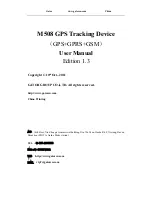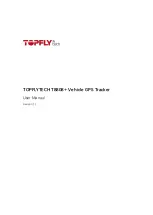
LA000507G © 2006 Navman New Zealand. All rights reserved. Proprietary information and specifications subject to change without notice.
Contents
1.0 Introduction .......................................................................................................4
2.0 Technical description .......................................................................................4
2.1 Product applications
..................................................................................................... 4
2.2 Receiver architecture
................................................................................................... 4
2.3 Major components of the Jupiter 20
............................................................................. 5
2.4 Physical characteristics ................................................................................................ 5
2.5 Mechanical specification
.............................................................................................. 5
2.6 External antenna surface mount pads
......................................................................... 5
2.7 I/O and power connections
........................................................................................... 5
2.8 Environmental
.............................................................................................................. 6
2.9 Compliances
................................................................................................................ 6
2.10 Marking/Serialisation
.................................................................................................. 6
3.0 Performance characteristics ...........................................................................6
3.1 TTFF (Time To First Fix) ............................................................................................... 6
3.1.1 Hot start ................................................................................................................ 6
3.1.2 Warm start ............................................................................................................ 6
3.1.3 Cold start
.............................................................................................................. 6
3.2 Acquisition times
.......................................................................................................... 7
3.3 Timing 1PPS output
..................................................................................................... 7
3.4 Battery backu
p
(SRAM/RTC backup)
.......................................................................... 7
3.5 TricklePower mode
....................................................................................................... 7
3.5.1 Adaptive TricklePower
mode ................................................................................ 7
3.5.2 Push‑To‑Fix mode
................................................................................................ 7
3.6 Differential aiding
.........................................................................................................
8
3.6.1 Differential GPS (DGPS)
......................................................................................
8
3.6.2 Satellite Based Augmentation Systems (SBAS) including WAAS and EGNOS
..
8
3.7 Navigation modes .........................................................................................................
8
3.8 Core processor performance
.......................................................................................
8
3.9 Sensitivity
.....................................................................................................................
8
3.10 Dynamic constraints
...................................................................................................
9
3.11 Position and velocity accuracy
....................................................................................
9
4.0 Electrical requirements ....................................................................................9
4.1 Power supply
................................................................................................................
9
4.1.1 Primary power .......................................................................................................
9
4.1.2 Low supply voltage detector
.................................................................................
9
4.1.3 VCC_RF power supply
.........................................................................................
9
4.1.4 External antenna voltage .....................................................................................10
4.1.5 RF (Radio Frequency) input
.................................................................................10
4.1.6 Antenna gain ........................................................................................................10
4.1.7 Burnout protection
...............................................................................................10
4.1.8 Jamming performance
.........................................................................................10
4.1.9 Flash upgradability
...............................................................................................10
4.1.10 Reset input
.........................................................................................................10
4.2 Data input output specifications
.................................................................................11
4.2.1 Voltage levels ......................................................................................................11
4.2.2 I/O surface mount pads
.......................................................................................11


































